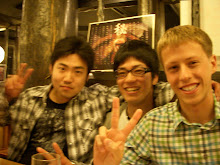Sometimes what we believe to be true and what is true are polar opposites. We can be lead astray by our own misconceptions and insecurities. Sometimes, it's the things we find the most comfort in that lead us astray.
[Based on American Airlines flight 1420]
It was approaching midnight in New York as Sky America flight 2000 was nearing John F. Kennedy International Airport (KJFK) on a red-eye flight from Los Angeles. A strong line of thunderstorms was closing in on the airport, but the crew on board flight 2000 was determined to arrive on-time and meet the company's standards for resting-hours before their next flight at 9:00am.
The Boeing 757-200, manufactured in 1998, had just undergone a complete cabin upgrade. Spacious new seats were available in all classes, and a new in-flight entertainment system was accessible for all passengers. The wings had also been retrofitted with winglets, which made the aircraft more aerodymanic and fuel-efficient.
198 passengers were on board. The majority of the passengers were holiday travelers returning home to the East Coast following the July 4th holiday. First class was occupied by business travelers and frequent-flyers. Seven crewmembers were also on board, including the pilot, co-pilot, and five flight attendants.
The line of thunderstorms was gaining intensity as flight 2000 was cleared to descend to 3,500 feet and maintain a heading of 270 degrees. Continuous lightning was visible to both the pilot and co-pilot, and some passengers started feeling anxious as the airplane began to encounter severe turbulence.
A Severe Thunderstorm Warning was issued as flight 2000 was cleared for the ILS approach to runway 31L at KJFK. Windshear warnings were issued for all major Port Authority airports, but the crew on board flight 2000 elected to continue their approach into KJFK. Many passengers were feeling sick as the aircraft approached the runway 31L threshold.
As the aircraft crossed the threshold, the wings rocked briefly and the aircraft pitched 10 degrees nose-up. Without warning, the aircraft dropped 300 feet onto runway 31L. The violent impact sheared the right main landing-gear off and tore the number two engine free of the wing. An explosion occurred on the outboard section of the right wing as the aircraft skidded down the runway. The fire quickly spread into the mid-section of the cabin.
Within moments, passengers sitting in that section of the cabin were engulfed in flames. The aircraft continued to skid until it departed the right side of the runway and came to a rest inverted. The vertical stabilizer had been torn off and most of the right wing was missing. The left wing remained intact except for the winglet, which had been torn off. The nose-gear had also been torn off. The cockpit had been crushed when the aircraft struck two airport vehicles. Both the pilot and copilot did not survive.
The aircraft was rocked by two explosions after coming to a stop. Both explosions occurred around the center of the fuselage. The fire from all three explosions began to spread throughout the remainder of the fuselage, which was now in three pieces. Passengers and crewmembers in the forward section of the aircraft were able to escape quickly. Some passengers were uninjured while others suffered from large cuts and abrasions.
At this point, John F. Kennedy International Airport had been completely shut down, with all inbound air traffic diverted to major airports within a 500 mile radius. Airport rescue teams were dispatched moments after the crash. Upon arriving at the crash site, they were met by passengers who had escaped the aircraft. Some survivors were trying to re-enter the burning fuselage in order to rescue trapped passengers.
Many passengers remained trapped inside the aircraft as it continued to burn. The center of the fuselage above the wings was fully engulfed in flames. No survivors were sitting in this section. The back of the fuselage had also separated, allowing some passengers to escape. Some passengers were pinned between seats. Some had been thrown from the aircraft.
In total, 57 passengers and three crewmembers (pilot, copilot and a flight attendant) perished in the crash. The survivors of flight 2000 were seen as heroes. Around one month later, a ceremony was held honoring the survivors and the victims. Many had been loyal customers of Sky America for decades. Everyone had to rebuild.
Sky America, Inc.
The survivors.
The victims' family members.
John F. Kennedy International Airport.
The general public.
The public lost trust in the airlines. Sky America, Inc. took a huge hit. Families of the victims had to settle all legal issues. The survivors had to go through months of therapy and rehabilitation.
Eventually, everyone rebuilt. Trust was regained. Nervous fliers took to the skies again. Sky America, Inc. reestablished it's reputation. John F. Kennedy International Airport returned to normal operations.
To commemorate the victims of the crash, flight number 2000 was retired from Sky America flights.
While it may have been an extreme example, it gets a point across. While trust may be lost, it can be rebuilt, but all parties involved must work together.
[Together we shall rebuild]
2017
8 years ago


No comments:
Post a Comment